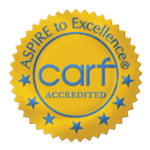Substance abuse, dependence, and addiction occur for many reasons that can vary greatly between individuals, just as the severity of such behaviors and experiences will differ from person to person. Any effective drug rehab treatment for alcohol or drug dependence; however, must take the individual’s health and safety as top priorities.
The right treatment ought to take into account a person’s goals, and give them the care, guidance, and support to create the life they want. Within the substance abuse treatment community, there are two basic approaches as to how this is best achieved in drug rehab: abstinence-based models or harm reduction-based models.
Abstinence-Based Drug Rehab
Abstinence-based treatment models view addiction as a disease, and focus on completely eliminating the use of a given substance. 12-step programs like Alcoholics Anonymous, among the most popular recovery models, advocate abstinence as key to their methodology. The first step of AA demonstrates why many believe total abstinence from drugs or alcohol is necessary for recovery; it is an admission that one is powerless over a given substance, and that it has made one’s life unmanageable.
For those struggling with addiction, abstinence ensures that a substance never has that sort of power over one’s life again. In terms of treatment, abstinence models avoid the use of methadone, Suboxone, and other opioid-based treatments. Supporters of abstinence-based models feel that these treatments present their own risks for misuse and addiction. Additionally, they believe that replacing one drug with another – even if that drug is intended to help – is ultimately not solving the root problem.
Harm Reduction as Concept and Treatment Approach
The concept of harm reduction began as a public health initiative that did not advocate the complete elimination of substances for users of drugs or alcohol. Instead, Harm Reduction International writes that the aim is to “reduce the adverse health, social and economic consequences of the use of legal and illegal psychoactive drugs without necessarily reducing drug consumption”. Some popular applications of harm reduction models include the establishment of clean needle exchanges, where users of drugs need not fear risking infectious disease.
In terms of treatment, some centers using a harm reduction approach use medication-assisted treatment, with drugs like methadone or Suboxone, to treat opioid addiction which can help with withdrawal symptoms and cravings. Harm reduction-based treatment centers often still work with the goal of ultimately stopping substance abuse, but use evidence-backed medications to achieve that end.
Why Choose Abstinence Over Harm Reduction?
Harm reduction and abstinence-based approaches both have valid and legitimate applications. However, there are compelling reasons why an individual may opt to recover with a fully abstinent approach. Many are uncomfortable with the idea of using opioids to get off opioids or alcohol, given their addictive qualities and the fact that some individuals who begin Suboxone or methadone treatment end up using those drugs long-term. Abstinence also signals a shift in one’s entire lifestyle, worldview, and health. It demonstrates self-control, willpower, and a dedication to recover and stay recovered.
Effective Abstinence-Based Addiction Treatment
Granite Recovery Centers uses both abstinence-based approaches and harm reduction-based approaches during drug rehab and throughout the continuum of care. For each individual, we create a plan around their unique needs that will provide the best support for reaching long-term sobriety.
We provide each individual with the support, community, treatment, and care that sets them on track for true, sustained recovery. Our unique approach combines the best of 12-step care with proven clinical modalities in order to give the individual everything they need to promote such a recovery.
Call our admissions staff for help at 855.712.7784 .






